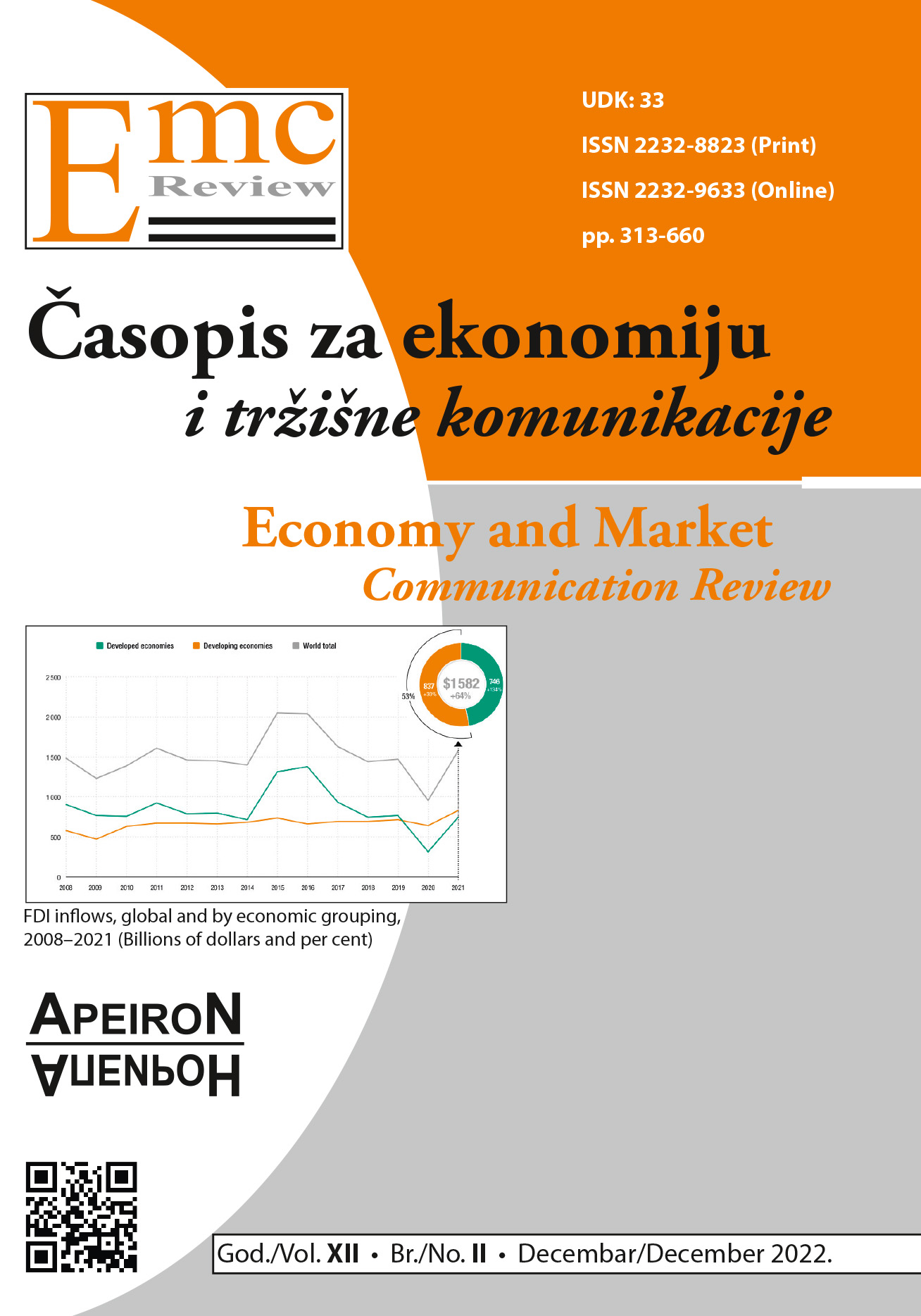APPLICATION OF FACTOR ANALYSIS AND I-DISTANCE IN THE RANKING OF COUNTRIES ACCORDING TO THE LEVEL OF DEVELOPMENT
DOI:
https://doi.org/10.7251/EMC2202408RAbstract
Contemporary theory defines development as a multi-dimensional and complex phenomenon which, therefore, cannot be measured by just one, but by a series of macroeconomic indicators. Different international organizations use different country classification systems. To assess the degree of development of a country, UNDP (United Nations Development Programme) uses the complex HDI index (Human Development Index). The HDI index includes the dimension of health (length of life), the dimension of education and the dimension of income (measured by gross national income per capita). Based on this index, the countries of the world are divided into four groups: countries with very high, countries with high, countries with medium and countries with low level of human development. The World Bank classifies countries based on GDP per capita. The International Monetary Fund classifies countries into “advanced economies” and “emerging and developing economies”. A unique classification of countries according to the degree of development is difficult, given that the very concept of the development of countries is complex and often includes several aspects, such as economic and social aspects. Although there is no single classification with precisely defined indicators that can be applied to each country and provide relevant data and a reliable picture of the level of development of the countries of the world, the need for such a classification is very pronounced. The aim of the paper is to determine the ranking of selected countries according to the level of development in 2021 based on a certain number of macroeconomic indicators. For the purposes of realizing the formulated goal, the procedure for ranking and classifying countries using the I-distance is presented. The I-distance method is a method of classification and ranking of multidimensional phenomena, based on the distance between the selected indicators. The selection of indicators was carried out using factor analysis (specifically, analysis of the main components) and the use of statistical software SPSS (eng. Statistical Package for Social Sciences - version PASW Statistics 23). Factor analysis is an objective method that uses its algorithms and techniques to reduce indicators and reduce them to an optimal number. After the formation of the main factors, the I distance method was used to define the ranking of countries according to the level of development. In this paper, the countries of the European Union were analyzed. In addition to the countries of the European Union, the analysis included the following countries: Japan, Russia, USA, Canada, Great Britain and Bosnia and Herzegovina. Based on the formed ranking of countries, the USA is in first place, followed by Germany, France, Great Britain, Italy, Canada, Russia and Japan. Not a single model provides a solution that has an essential, fundamental meaning, that is, based on its application, one cannot conclude what the real difference in the level of development is between the observed countries. Hence, the application of these methods is limited to compiling a ranking of the level of development of countries, which can serve us as “compass” in the analysis of their development.
